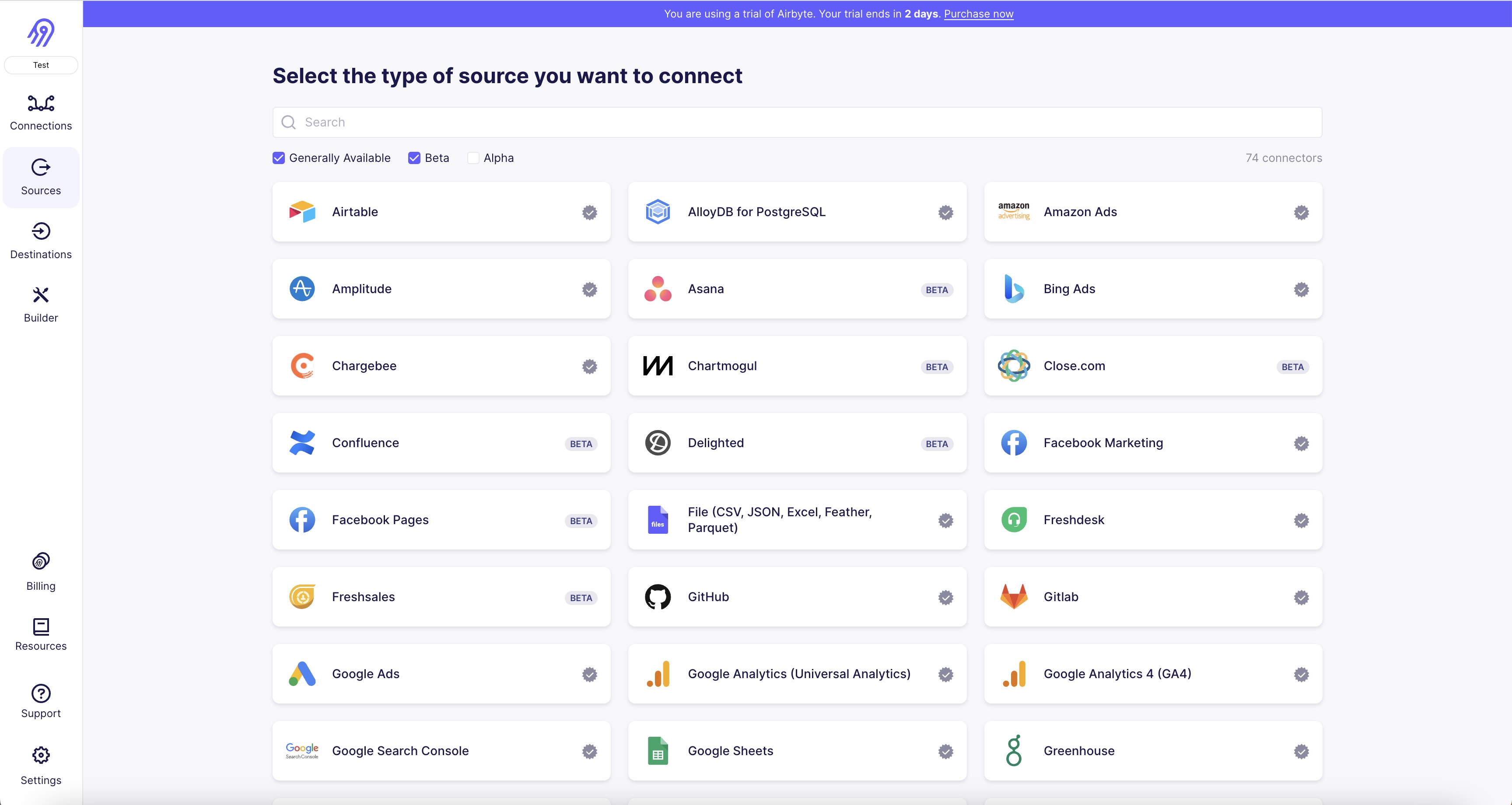Gocardless is an online tool that collects direct bank payments on behalf of other businesses and It was founded in January 2011. GoCardless is an online Direct Debit supplier with a secure set-up process that permits the customer to pay both easily and safely. We ask all our customers to sign up to gain a streamlined payment procedure whereby the amount is automatically debited from the account provided every month. GoCardless is aims at becoming the world's bank payment network.

1. First, navigate to the GoCardless source connector page on Airbyte.com.
2. Click on the "Add Source" button to begin the process of adding your GoCardless credentials.
3. In the "Connection Configuration" section, enter your GoCardless access token. This can be found in your GoCardless account under "Developers" > "Personal Access Tokens".
4. Next, enter the webhook secret. This can also be found in your GoCardless account under "Developers" > "Webhooks".
5. In the "Sync Schema" section, select the tables you want to sync data from.
6. Click on the "Test" button to ensure that your credentials are correct and that Airbyte can connect to your GoCardless account.
7. If the test is successful, click on the "Create" button to save your GoCardless source connector.
8. You can now use this connector to sync data from your GoCardless account to your destination of choice.
Note: It is important to ensure that your GoCardless account has the necessary permissions to allow Airbyte to access your data. You may need to adjust your account settings to grant these permissions.


With Airbyte, creating data pipelines take minutes, and the data integration possibilities are endless. Airbyte supports the largest catalog of API tools, databases, and files, among other sources. Airbyte's connectors are open-source, so you can add any custom objects to the connector, or even build a new connector from scratch without any local dev environment or any data engineer within 10 minutes with the no-code connector builder.
We look forward to seeing you make use of it! We invite you to join the conversation on our community Slack Channel, or sign up for our newsletter. You should also check out other Airbyte tutorials, and Airbyte’s content hub!
What should you do next?
Hope you enjoyed the reading. Here are the 3 ways we can help you in your data journey:



What should you do next?
Hope you enjoyed the reading. Here are the 3 ways we can help you in your data journey:



Ready to get started?
Frequently Asked Questions
GoCardless's API provides access to a wide range of data related to payments and customers. The following are the categories of data that can be accessed through the API:
1. Payment data: This includes information about payments made by customers, such as the amount, currency, status, and date of payment.
2. Customer data: This includes information about customers, such as their name, email address, phone number, and billing address.
3. Subscription data: This includes information about subscriptions, such as the amount, frequency, and start and end dates.
4. Mandate data: This includes information about mandates, which are the authorizations given by customers to allow GoCardless to collect payments from their bank accounts.
5. Bank account data: This includes information about the bank accounts used by customers to make payments, such as the account number, sort code, and bank name.
6. Refund data: This includes information about refunds issued to customers, such as the amount, currency, and date of refund.
7. Dispute data: This includes information about disputes raised by customers, such as the reason for the dispute and the status of the dispute resolution process.
Overall, GoCardless's API provides comprehensive access to data related to payments and customers, enabling businesses to manage their payment processes more efficiently and effectively.
